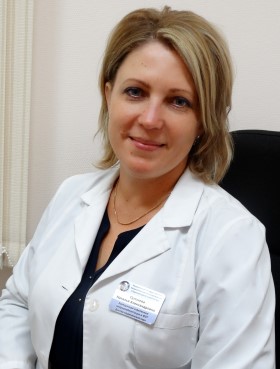Suponeva, N.A.

Dr. Sci. (Medicine)
Corresponding Member of the Russian Academy of Sciences, Professor, Chief Researcher, Director, Institute of Neurorehabilitation and Recovery Technologies, Research Centre of Neurology.
-
Testing a Set of fMRI Paradigms to Detect the “Covert Cognition” Phenomenon on a Sample of Healthy VolunteersLomonosov Psychology Journal, 2024, 2. p. 219-242Cherkasova, A.N., Yatsko, K.A. , Kovyazina, M.S. , Varako, N.A., Kremneva, E.I., Krotenkova, M.V., Ryabinkina, Yu.V., Suponeva, N.A., Piradov, M.A.read more1678
-
Background. The authors developed a specialized set of functional magnetic resonance imaging paradigms, based on data from general psychology, neuropsychology and previous studies, to diagnose the “covert cognition” phenomenon on a Russian-speaking sample of patients with chronic disorders of consciousness. Before using this set with patients, it is advisable to carry out testing on a group of healthy people with preserved consciousness in order to detect significant clusters of activation corresponding to paradigms and to assess their reproducibility at the individual level.
Objectives. The study is aimed at testing the proposed set of fMRI paradigms in order to detect the “covert cognition” phenomenon on a sample of healthy volunteers.
Study Participants. Sample included 10 healthy volunteers (3 men, 7 women, M = 44 years, SD = 17).
Methods. The study was performed on a magnetic resonance imaging scanner “Magnetom Verio”, “Siemens” with a magnetic field strength of 3 Tesla. The hierarchical set of nine passive and three active paradigms was presented to participants. Statistical analysis was carried out using SPM12.
Results. As a result of group analysis, significant clusters of activation were observed in six passive paradigms, covering the perception of tactile (“writing” a letter on the abdomen), auditory non-speech (alarm clock, two musical fragments without words) and speech stimuli. Auditory speech paradigms (audio fragment from the film with obscene language, testee`s name within the “cocktail party” effect) were the most reproducible paradigms at the individual level.
Conclusions. The obtained results allow us to apply the proven paradigms in further studies to detecting the “covert cognition” phenomenon on a Russianspeaking sample of patients with chronic disorders of consciousness. Data on brain activation in healthy volunteers in different paradigms enriches theoretical understanding of cerebral organization of cognitive functions.
Keywords: neuropsychology; consciousness; prolonged disorders of consciousness; “covert cognition”; functional magnetic resonance imaging DOI: 10.11621/LPJ-24-22
-









